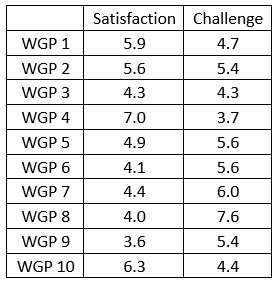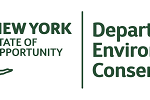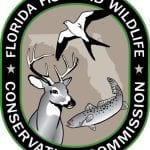The Principles Performance Assessment Tool (PPAT) is a rapid assessment tool that encourages any number of individuals within the agency, section or program to express their general perceptions of: (a) how satisfied they are with the efforts made by the agency, section or program with respect to each of the 10 wildlife governance principles (WGPs), and (b) how challenging it is for the agency to align with each principle. Level of satisfaction is rated on a nine-point scale, ranging from not at all satisfied to extremely satisfied. Degree of challenge is rated on a nine-point scale, ranging from not at all challenging to extremely challenging. People external to the entity being considered (e.g., others in the agency but not in the section or program being considered; possibly partners from outside the agency) could be included in this assessment, if desired.
The Principles Performance Assessment Tool (PPAT) does not seek detail about specific traits or practices of the agency (this is what the more detailed WGPs alignment self-assessment tool does). Instead, this instrument is designed to allow relevant agency staff to assess agency performance with respect to the WGPs quickly (approximately 15 minutes for input), leading to judgments about the need to conduct a more comprehensive alignment evaluation. Results from application of the PPAT contribute to a readiness assessment by answering the question, “Does my agency, section or program need to work harder or more effectively on various practices so they align better with certain WGPs?” That is a key component for a judgment that improvements are in order and that more detailed assessment of traits and practices is warranted to help pinpoint where greater effort is needed (priorities for agency action regarding specific practices).
Click here to view a PDF of the whole instrument.
To request an electronic link for the instrument, email ptpractice@cornell.edu.
Analysis of results
Results of the PPAT are displayed as a means table and as a plot to reveal if any principles that are rated as unsatisfactory might be addressed promptly with reasonable effort (low level of challenge).
An example means table is below. Higher numbers in the satisfaction column indicate greater levels of satisfaction. Higher numbers in the challenge column indicate a greater challenge to address that principle.

This gives participants a quick understanding of which of the governance principles have a greater satisfaction and which ones are more challenging. An additional output of the PPAT is a scatterplot, using the same means from the table above.

Using this visual representation, it becomes evident, for example, which of the Wildlife Governance Principles have a lower satisfaction and are also less challenging to address. These may be some principles that can be targeted for additional improvement first. In the image above, WGPs 3, 6, and 9 may be the ones selected to be addressed first- sort of the low-hanging fruit. On the other hand, WGP 4 is in greatest need of improvement, but is believed to be most challenging to address.
Here is the wording for each of the Wildlife Governance Principles in the PPAT:
- WGP 1 Considering all potential interests that current and future generations may have in wildlife.
- WGP 2 Seeking, listening, and responding to different perspectives (diverse values, interests, preferences) about wildlife and its management.
- WGP 3 Integrating all relevant biological and social science, citizens’ knowledge, and experience of wildlife management professionals.
- WGP 4 Avoiding bias or privileging some interests over others.
- WGP 5 Providing multiple benefits from wildlife and making sure that all citizens have an opportunity to experience some of those benefits.
- WGP 6 Making public wildlife management decisions in a manner that is open and transparent.
- WGP 7 Ensuring citizens have opportunities to hold the wildlife agency answerable for the quality of their management decisions and actions.
- WGP 8 Ensuring that citizens have ample opportunities to learn about issues so they can participate effectively in decision-making.
- WGP 9 Partnering with non-government organizations.
- WGP 10 Working across natural, political and cultural boundaries.
After your group has discussed and analyzed the results from the rapid assessment provided by PPAT, the more detailed ACCC instrument can be used next to delve into identification of areas in need of improvement in greater depth. The agency staff selected for ACCC may be the same group of people or may include more staff than the PPAT.





